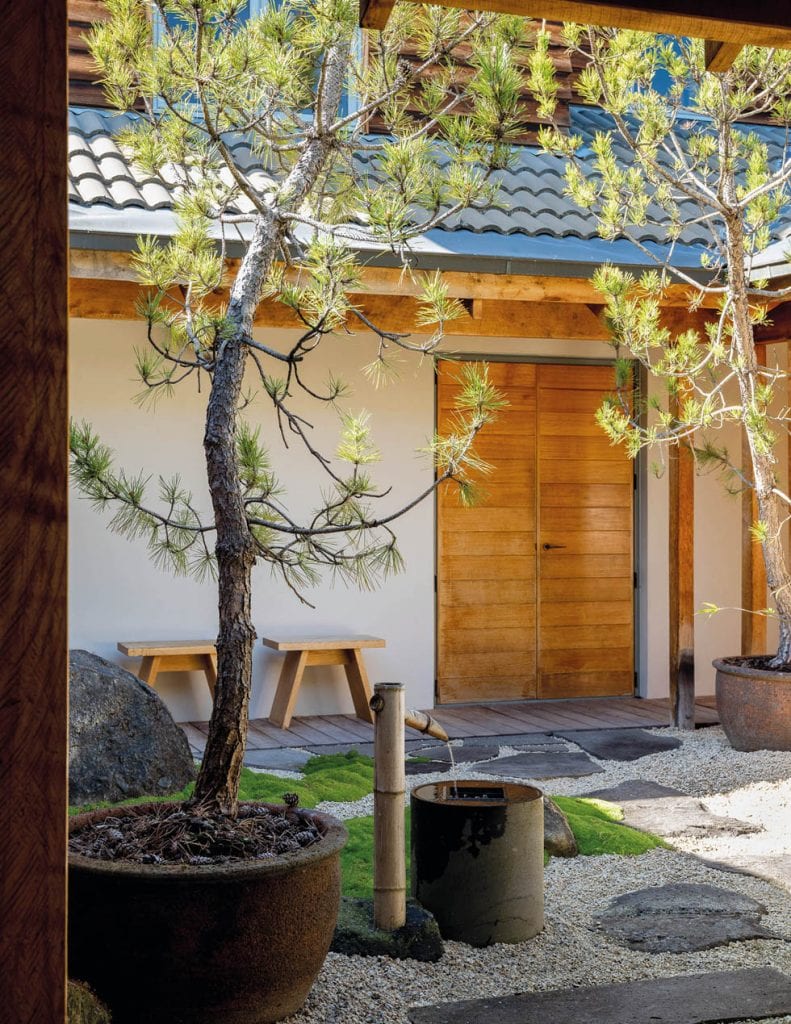Departing Ōtautahi/Christchurch on a misty morning, I travel north with some apprehension as to what the weather will be like for our photoshoot. Luckily, as I pass through the small towns beyond the city, the low cloud dissipates, and by the time I’m making my way through the Waipara Valley, the green hills are meeting bright blue sky as row upon row of vines flash by on either side of the road.
I’m on my way to Kumiko’s Guest House in Ōmihi, a stay I’ve heard plenty about and have been eager to visit for a while. The North Canterbury microclimate has made this area an excellent spot for grape growing — and a pretty great place for a getaway a short drive from the city too.

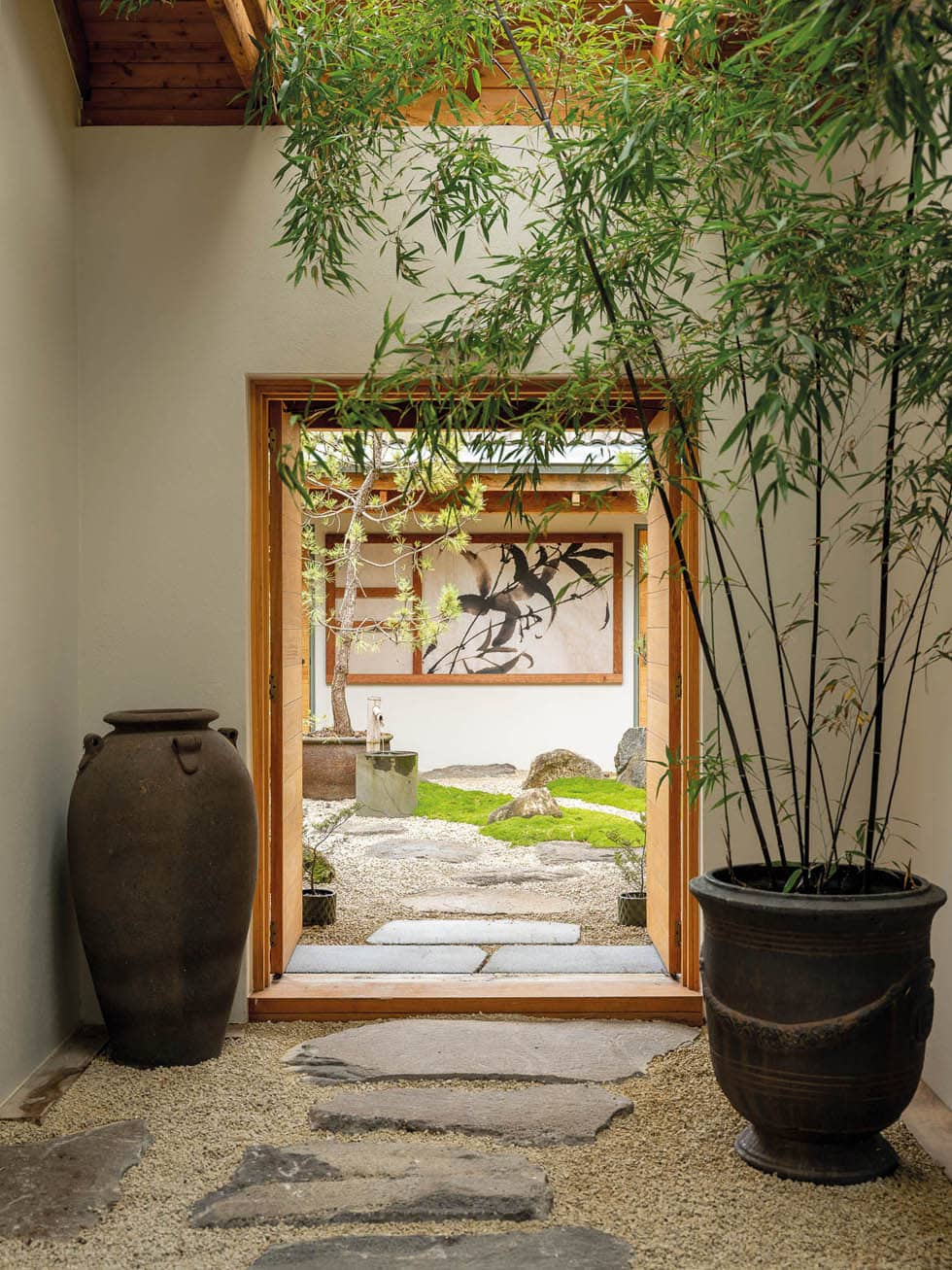
Winding up the drive past neighbouring winery Black Estate, I arrive at a natural plateau. Here the house sits, tucked into the hillside with a view across the valley. Built in 1995, it was originally designed for late Black Estate founder Russell Black and his late wife Kumiko. Recently, its new custodians Sue McGregor and Paul Robertson have renovated it (in collaboration with architectural colourist Peta Tearle, kitchen designer John Gaynor and landscape designer Mark Robberds of Terraforma) enhancing its East-meets-West sensibility that’s a nod to Kumiko’s Japanese heritage, while continuing to develop the entire property as a rural escape.
“The house hadn’t been lived in for about a year when we bought it,” says Sue. “It was quite dark inside, and the garden was growing up against the windows. It was beautifully detailed, though, so we wanted to keep the intention of the aesthetic, and we both liked the idea of being able to share such an amazing property with other people too.”
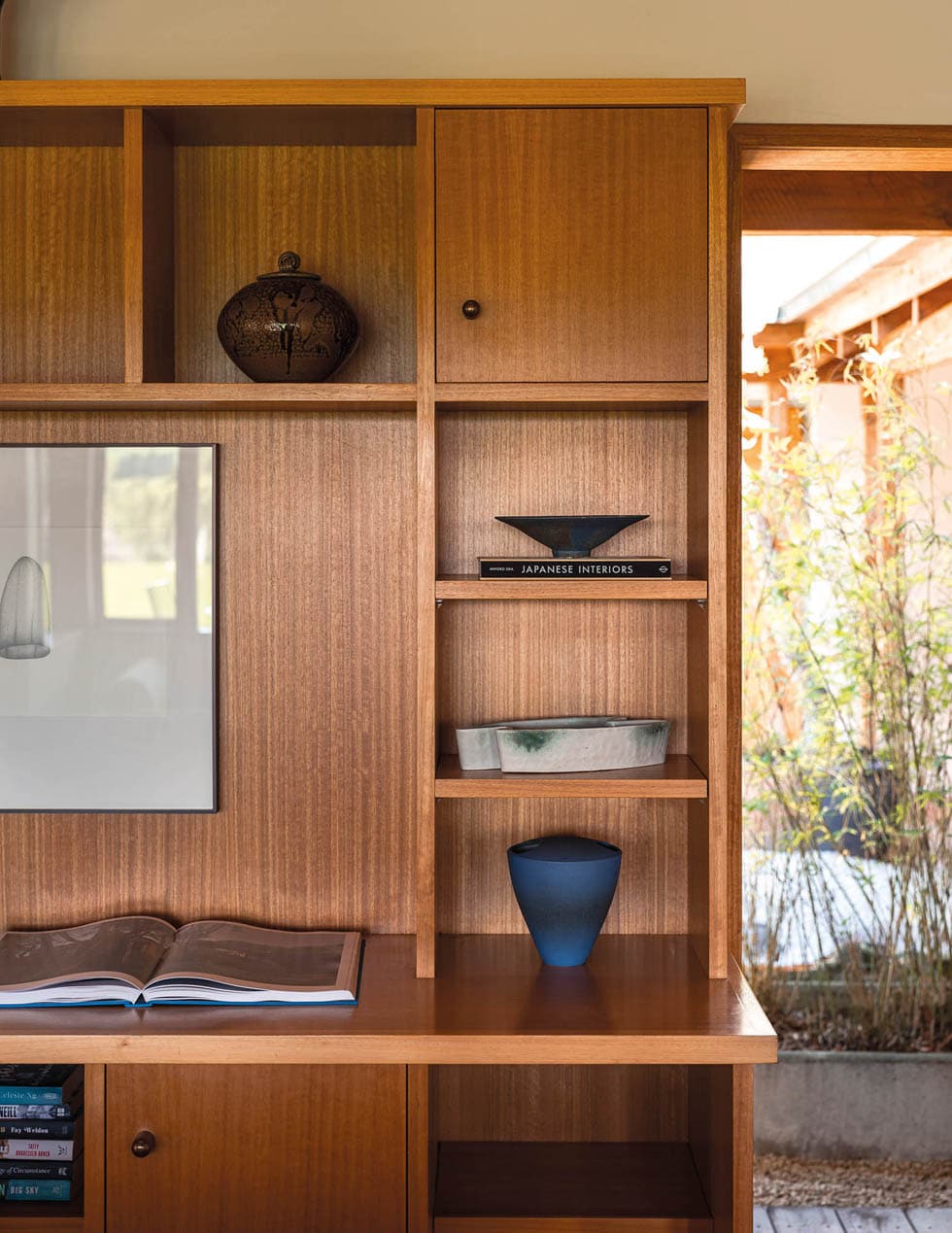


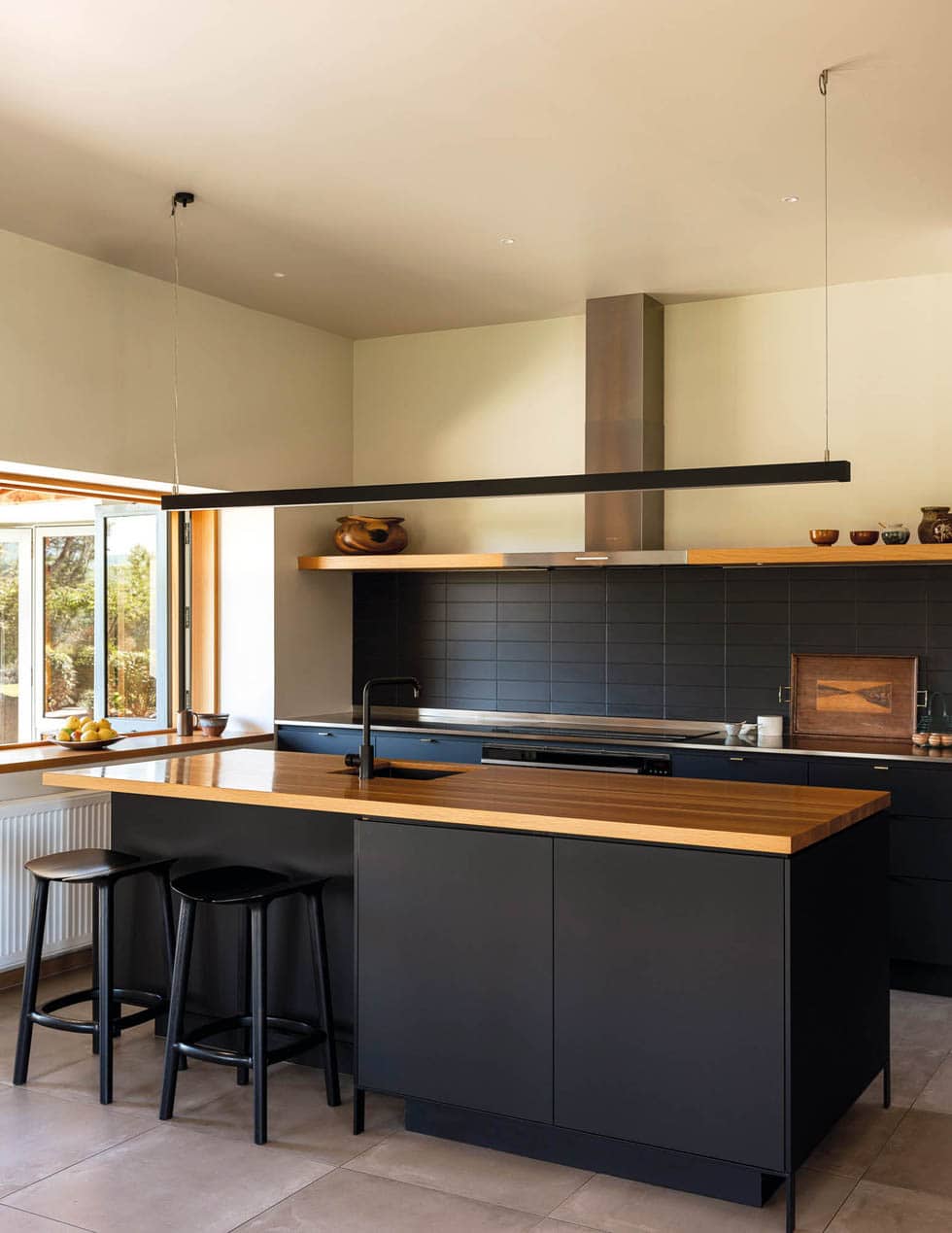
The latter are deeply serene. During my visit, the branches of established maple trees sway in the breeze, while elegant irises stand to attention against a wall. The crunch of gravel underfoot gives way to the bubble of a fountain trickling into a koi pond, past which pavers guide me from the wide-open landscape into a skylight-lit atrium. Through this I step into an internal courtyard reminiscent of the dry gardens found throughout Japan, which instills an immediate sense of calm.
Doors on all sides provide multiple entry points to the ground level of the house, which contains all the living spaces and the main suite. Upstairs are two more bedrooms, a bathroom and a kitchenette.
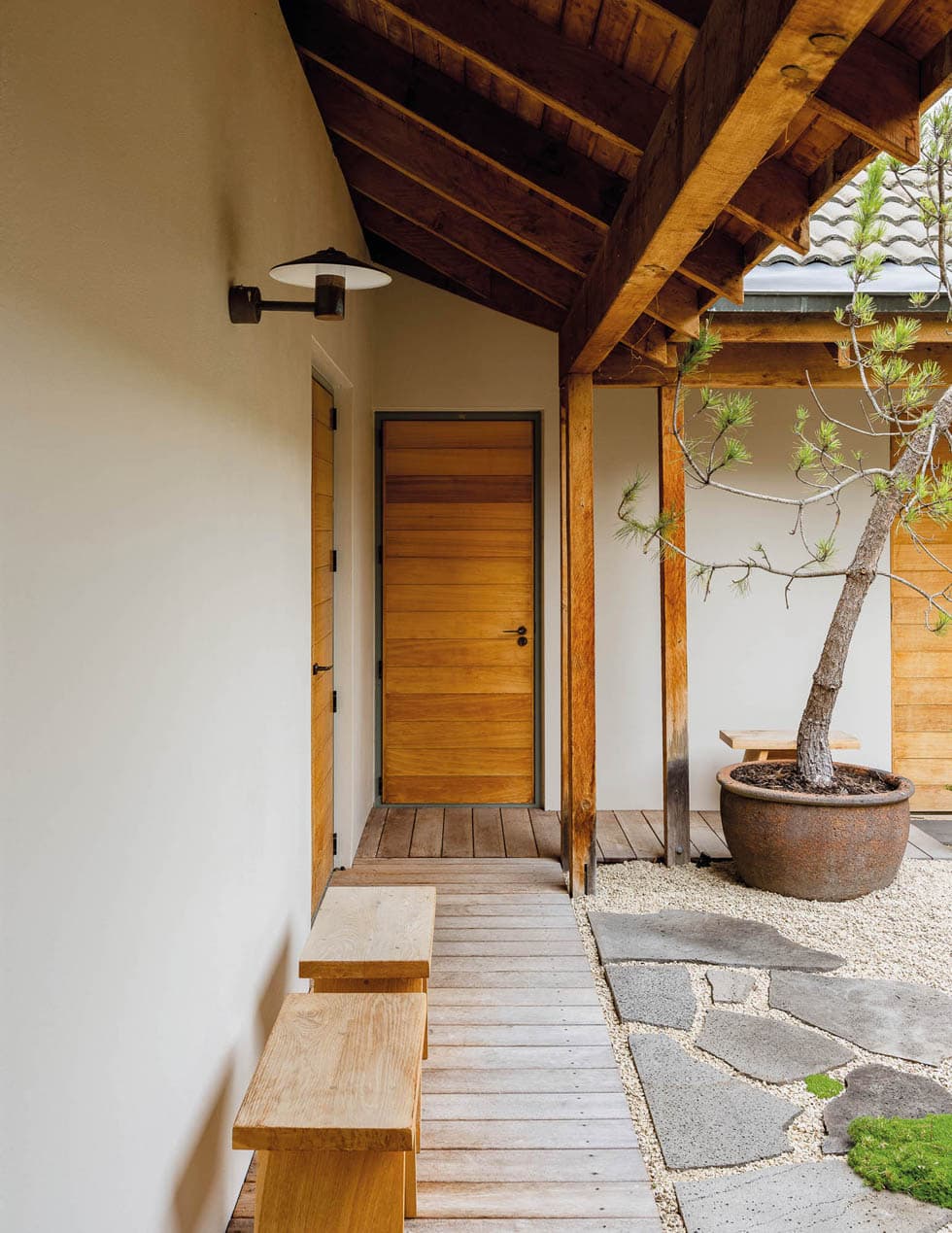
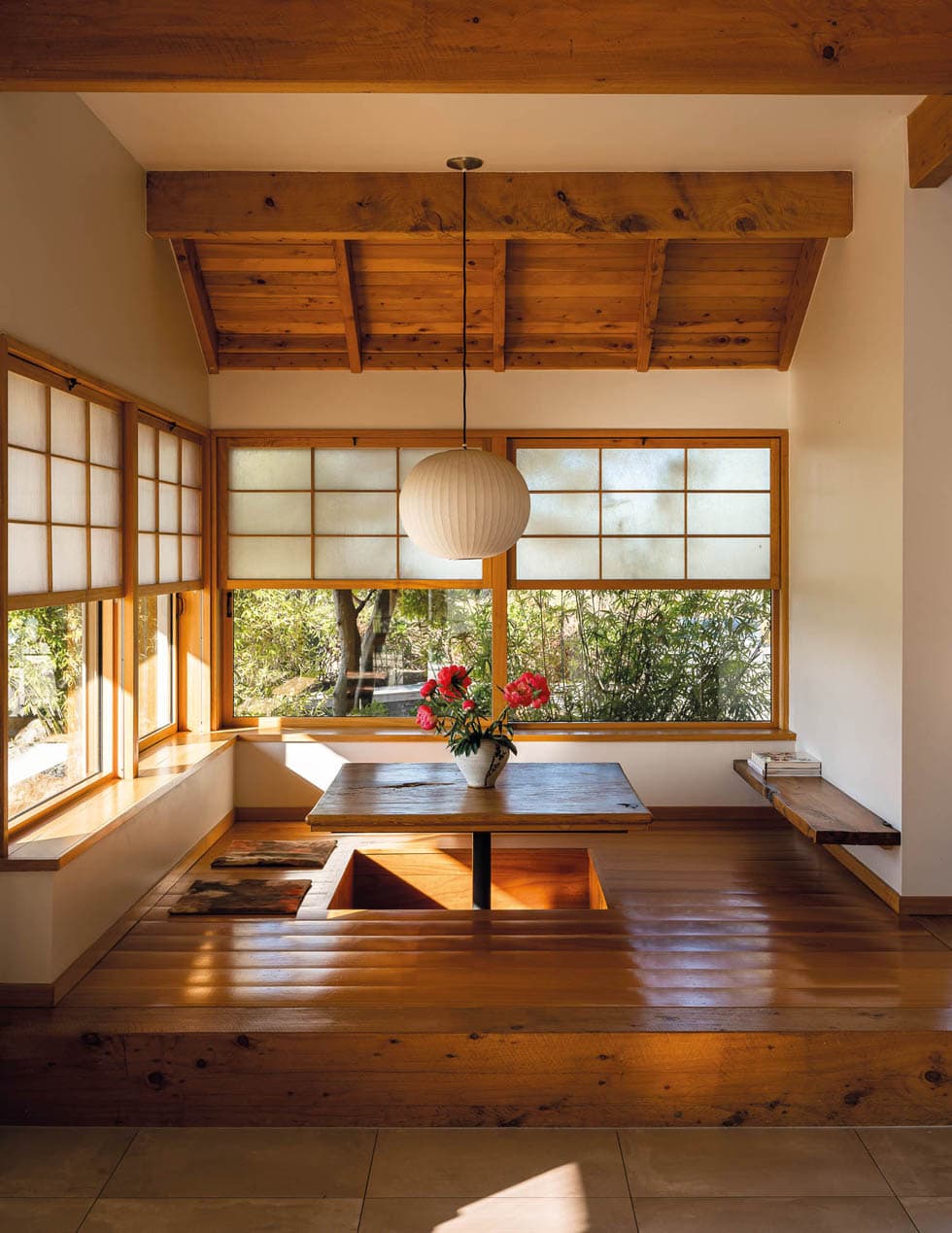
When the guesthouse’s booking schedule allows, Sue and Paul swap their apartment in Ōtautahi/Christchurch for Ōmihi in the weekends. “We treat the ground level like a large one-bedroom apartment when we’re here,” says Sue.

As well as connecting to the internal courtyard, both the public and private zones of the guesthouse’s ground level are linked to the garden that surrounds the home. The new kitchen features a servery window that opens onto an enclosed space in which a barbecue and fire pit can become the focus of evenings enjoyed outdoors. Or you can pad through the doors in the living area to sip sundowners on the deck that overlooks the wide front lawn — something of a passion project for Paul that has already formed a verdant backdrop for several weddings that have been hosted here. From the main bedroom, you can tiptoe out to have a shower concealed by a stand of bamboo or take a dip in the hot tub. When the weather’s cooler, guests can head back inside to the billiards room to entertain themselves with a game or two.
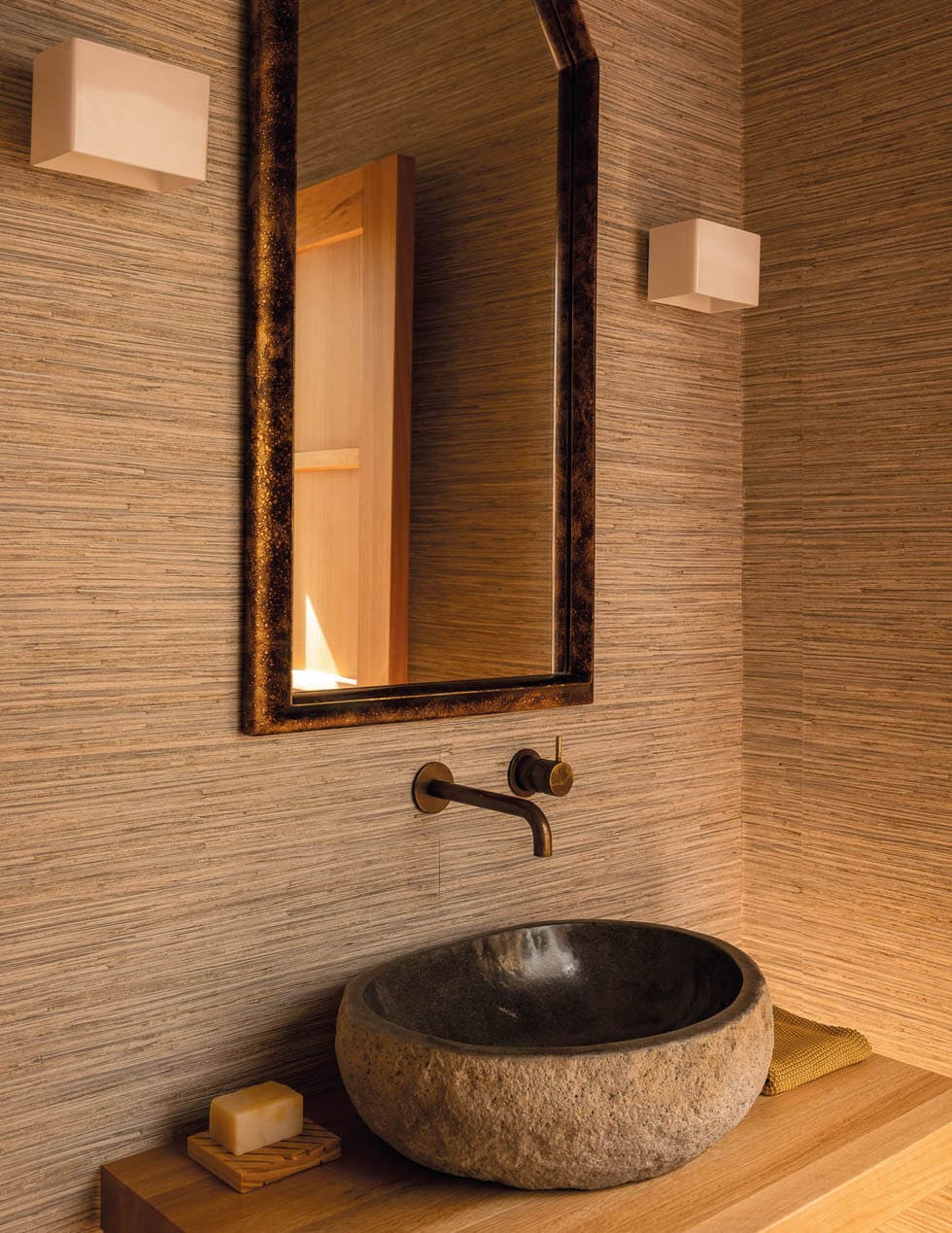
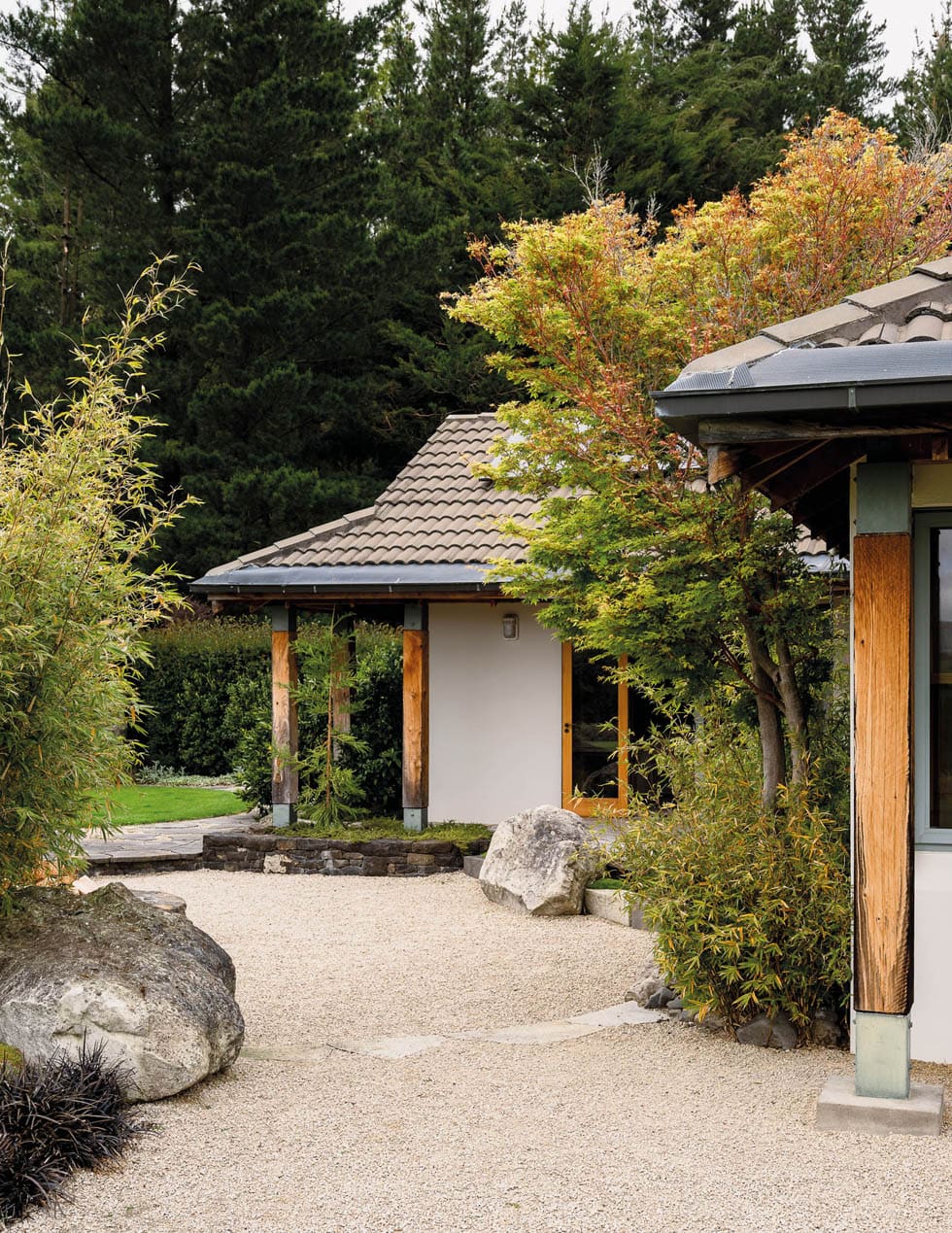
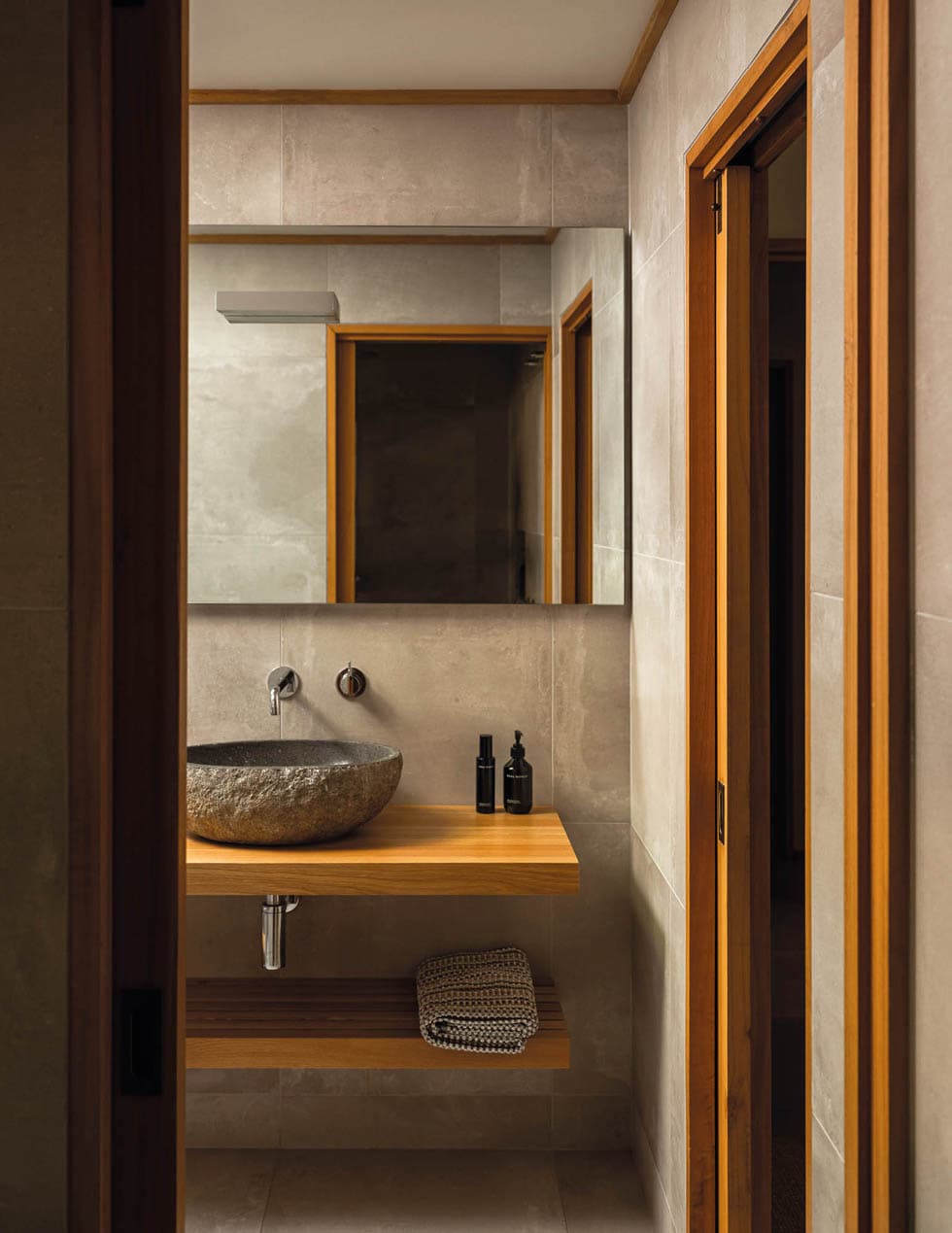
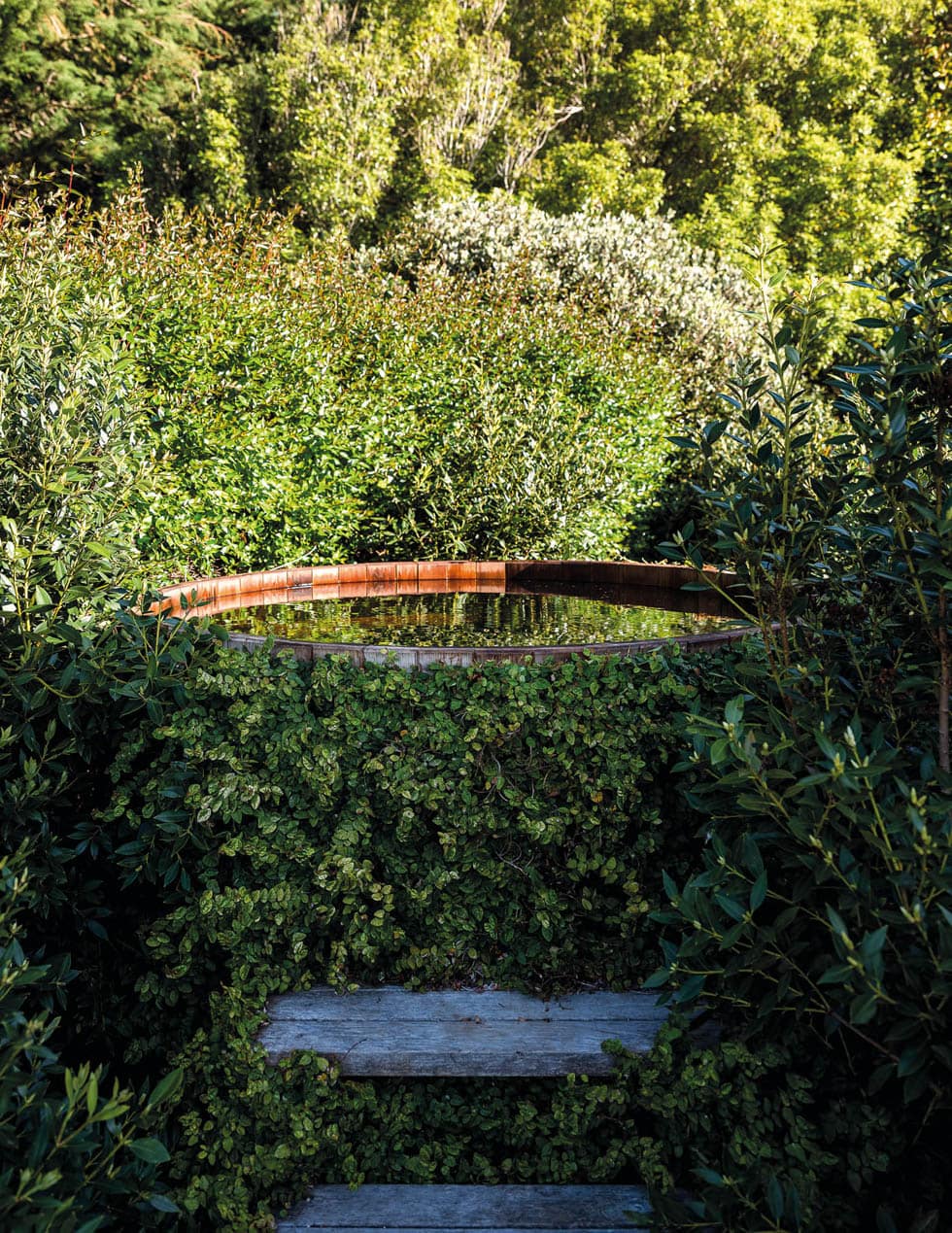
Self-described active relaxers, Sue and Paul have continued to make improvements to the experience on this property. Not long after completing the renovation, they had plans developed by Johnstone Callaghan Architects for Russell’s Cabins, a trio of huts designed with the spirit of a DoC campsite plus all the comforts required for a luxurious break away.
“We knew [principals] Mike Callaghan and Prue Johnstone prior to them setting up their practice, so we asked them to draw something up for us,” says Sue. “We were really impressed by their ideas for the cabins. They have a working relationship with builder Clive Barrington [of Clive Barrington Construction], and when they showed him the concept, he said he wanted to build them by hand in his workshop.”
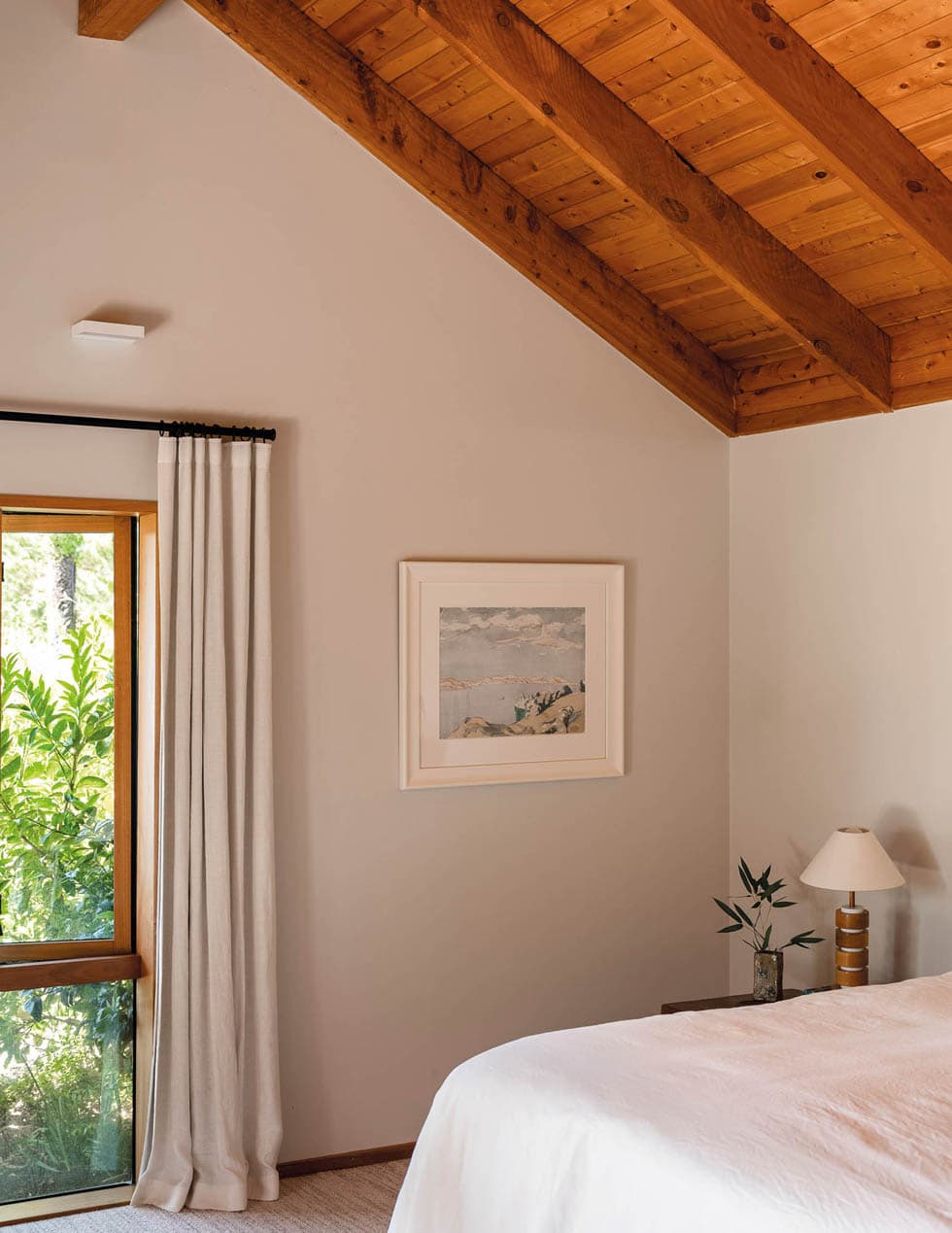
A short walk from the house, the cabins have a different mood to the main dwelling but showcase a similar aesthetic — wabi-sabi, the Japanese view that centres on the acceptance of transience and imperfection — interpreted through a local lens.
“Since the house takes its theme from Kumiko’s heritage, with the cabins we thought it would be appropriate to honour Russell’s early farming years by referencing musterers’ huts,” says Sue. “We paid close attention to detail but kept things simple and pared back to create a tranquil environment.”

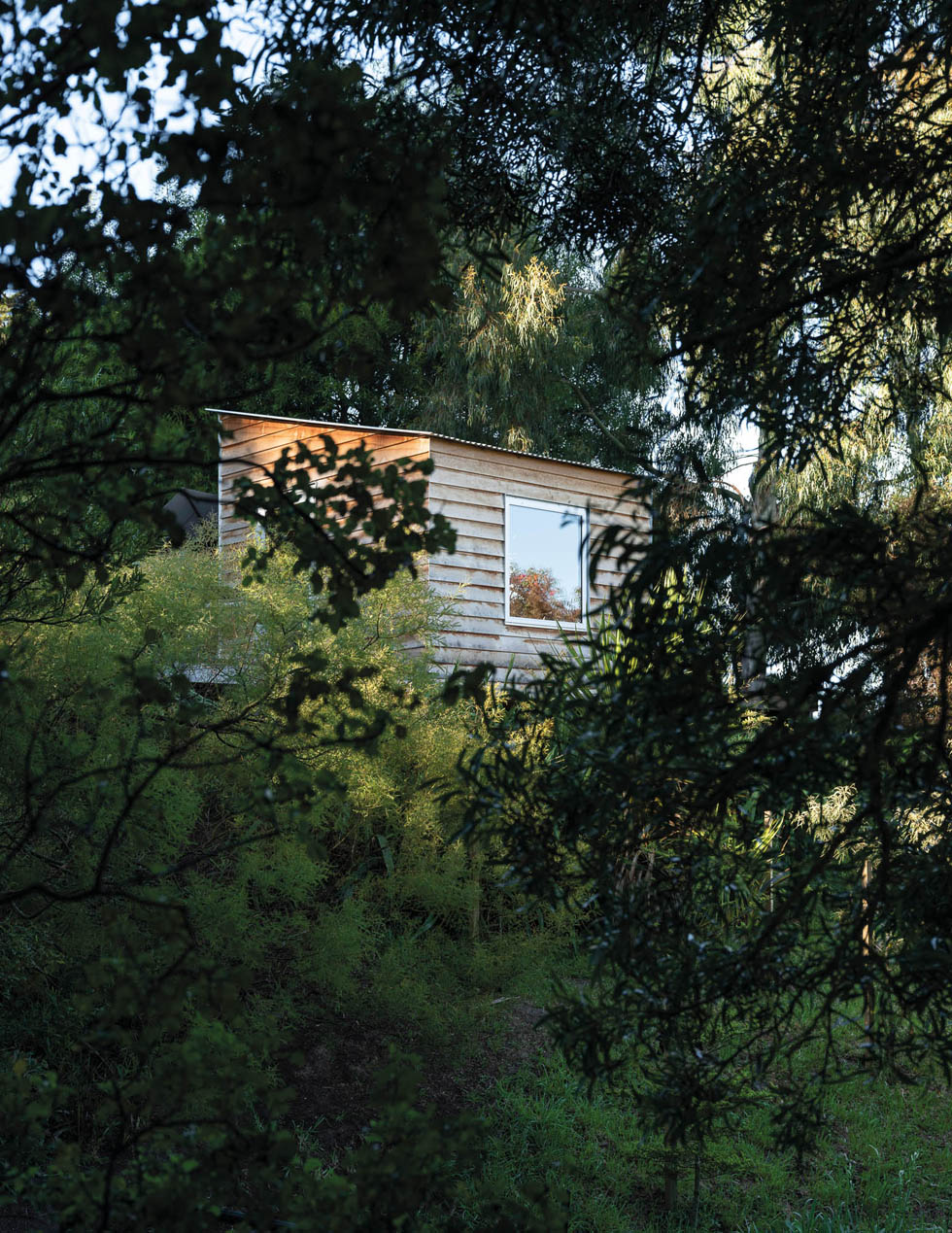
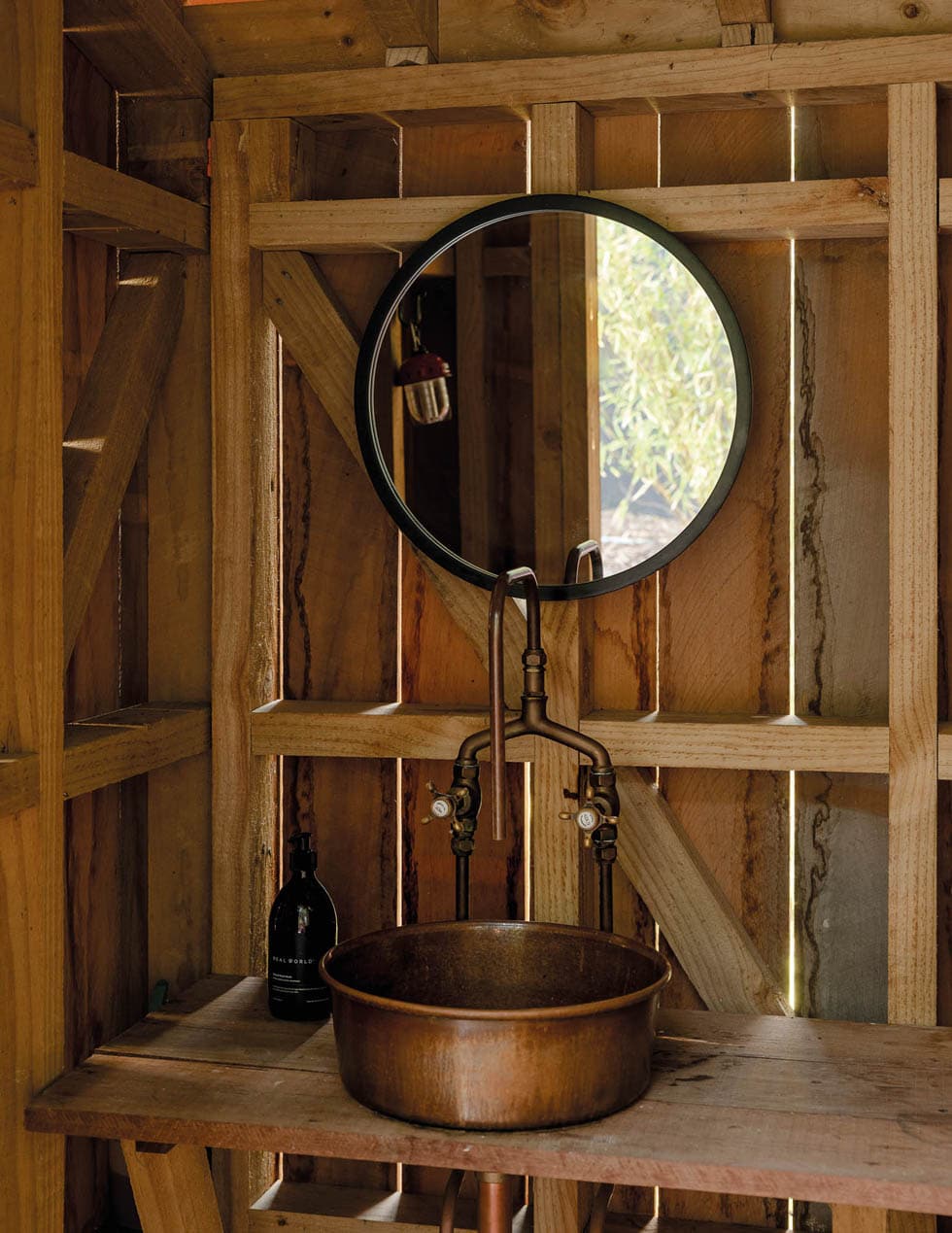
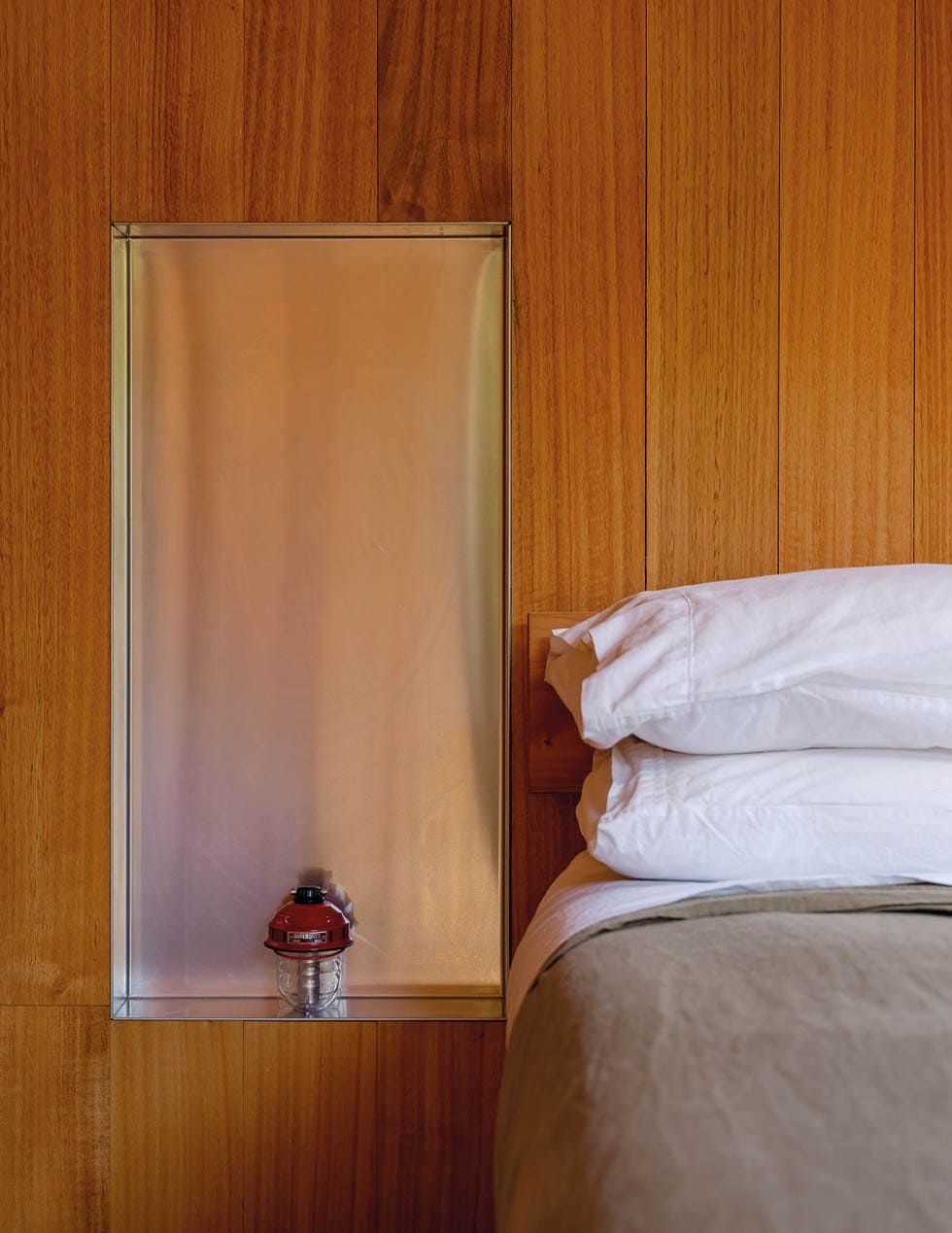
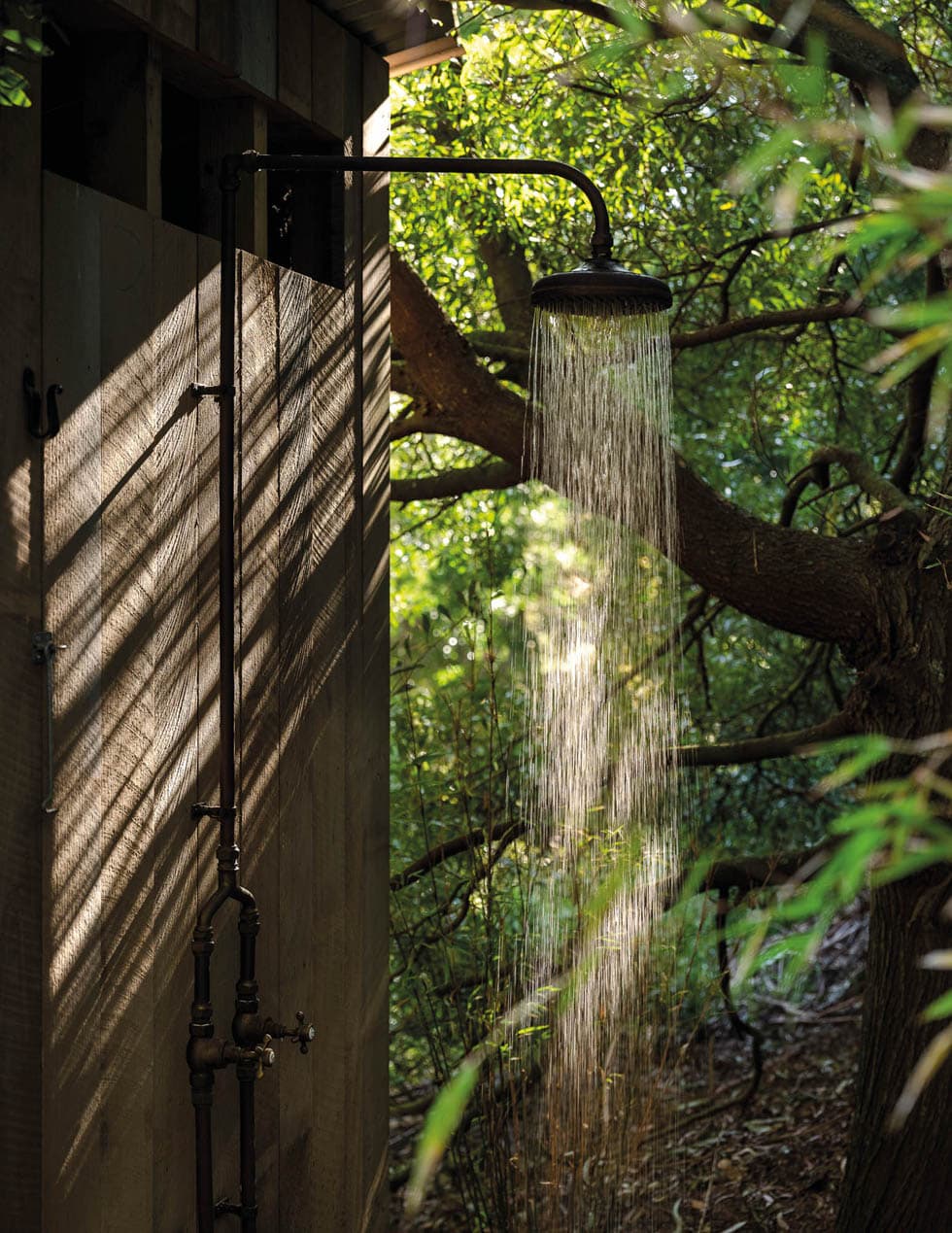
Native planting anchors the two cabins built for sleeping and the third for living into the hill. The prefabricated nature of the three buildings meant each needed to be less than 10m2. Beneath corrugated iron pitched roofs, they all share a square form, macrocarpa weatherboard cladding and eucalyptus-lined interiors. Each building’s well-considered position means its clerestory and picture windows deliver unique, private views of the valley. Their decks are used for alfresco cooking and bathing.
“The cabins are off the grid, with only lanterns for light,” says Sue. “There are plenty of blankets to wrap up in for some stargazing on the deck, and the outdoor bath is a hit for that too. It’s everything we’d hoped for, fully realising our vision to create a secluded, romantic getaway.”
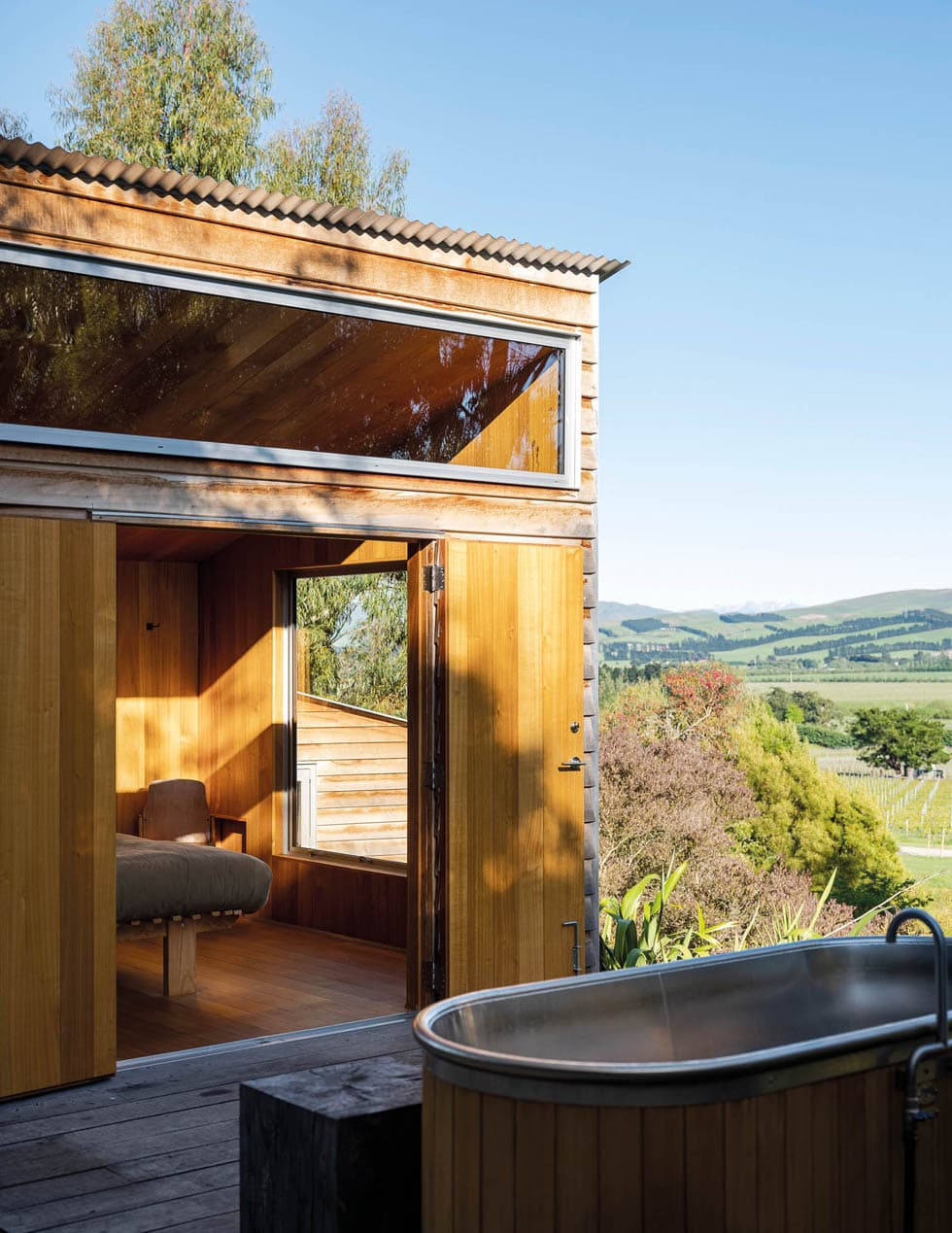
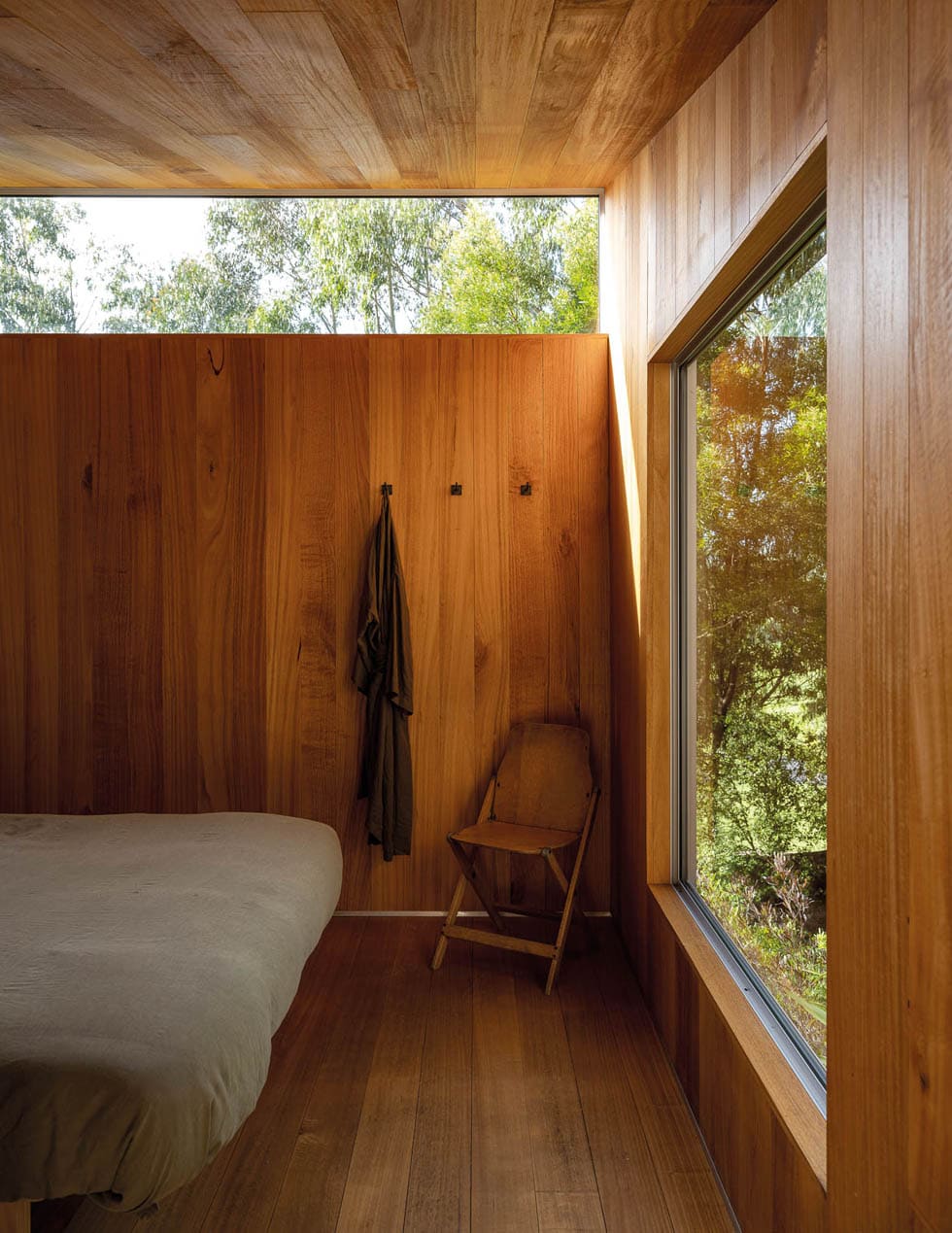
Not the type of people to sit still for long, the couple are already getting a move on with the next projects on their to-do list in their quest to perfect this place. Paul’s putting the finishing touches on a pitch-and-putt golf course, and Sue’s launched into the cultivation of a new edible garden and floral meadow growing plants that need minimal watering — crucial for the long, hot summers they have here. Rest assured they still find time to relax, though, including enjoying the best of what this wine-growing region has to offer when the sun sets on their satisfying days spent doing what they love.
Words Alice Lines
Photography Biddi Rowley

